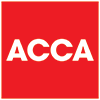Should small businesses still use the Flat Rate VAT scheme?
The VAT Flat Rate scheme was introduced in 2002 to simplify VAT reporting for small traders, reducing the time taken to calculate VAT and prepare returns compared to normal VAT accounting. Is it still a valid option though?
Let’s take a look…
The thresholds for using (joining the scheme with turnover up to £150,000 per annum) and exiting the scheme (mandatory when turnover exceeds £230,000 per annum) have not changed since 2003, so could be perceived as in need of an update!
With the extension of Making Tax Digital to all VAT registered businesses, everyone is now required to keep digital records and the original time saving benefits have reduced significantly. The decision around whether or not traders should use the scheme should now be based on the amount of VAT payable and the risk of making errors, rather than the time benefits.
Rather than recording and reporting input VAT on business expenses, and then deducting that input VAT from the output VAT on goods and services supplied, the trader merely has to report and pay VAT based on the flat rate percentage for that category of business multiplied by the VAT inclusive receipts.
The percentages currently range from 4% for businesses retailing food, newspapers, or children’s clothing to 14.5% for IT consultants and labour only builders, unless the ‘limited cost trader’ rules apply. There is also a 1% reduction in the first year of business as an incentive to use the scheme.
As well as making VAT simple to administer some businesses paid less VAT by using the scheme. Some service businesses allegedly exploited the tax savings, resulting in the government introducing the ‘limited cost trader’ 16.5% rate from April 2017.
What is a ‘Limited Cost Trader’?
A business is classed as a ‘limited cost trader’ and should use the 16.5% flat rate percentage if the cost of goods purchased is less than either:
- 2% of turnover, or
- £1,000 a year (if cost of goods are more than 2%).
‘Goods’ excludes expenditure on:
- any services – which is anything that isn’t goods,
- food and drink eaten by yourself or your staff,
- vehicle costs including fuel (unless you’re in the transport sector using your own or a leased vehicle),
- rent, internet, phone bills and accountancy fees,
- gifts, promotional items and donations,
- goods you will resell or hire out unless this is your main business activity,
- training and memberships, and
- capital items for example office equipment, laptops, mobile phones and tablets.
Consequently, many traders supplying services such as IT contractors, management consultants and labour-only builders are likely to be categorised as ‘limited cost traders’ and using normal VAT accounting, rather than the Flat Rate Scheme is likely to mean less VAT is payable.
Confusing VAT Rates
There is often an element of confusion around the comparison of rates between normal VAT accounting and the Flat Rate Scheme. The Flat Rate Scheme percentages aren’t directly comparable to the normal accounting rates.
For normal VAT accounting, you’d calculate VAT at 20% of the net invoice for reporting purposes, so a £10,000 invoice would become £12,000.
With the Flat Rate Scheme, the percentage quoted is a percentage of the gross amount (including VAT) of the invoice, rather than being calculated on the net amount.
This means that the 15% HMRC may quote is not comparable with the 20% that we’d usually (currently) think of for VAT, and the difference between the two schemes isn’t as much as may first appear.
Potential disadvantages of using a Flat Rate Scheme
The flat rate percentages are calculated in a way that takes into account zero-rated and exempt sales. They also contain an allowance for the VAT you spend on your purchases.
So the VAT Flat Rate Scheme might not be right for your business if:
- you buy mostly standard-rated items, as you cannot generally reclaim any input VAT*,
- you regularly receive a VAT repayment under standard VAT accounting, or
- you make a lot of zero-rated or exempt sales.
*Unless the business purchases a capital item where the VAT inclusive price exceeds £2,000.
In Summary…
The key point here is that there is no general rule in making a decision on the most suitable scheme for your business. Any decision between the Flat Rate Scheme and normal VAT accounting is one that is unique to each business and should be considered as such.
If you’re unsure about which scheme is most suitable for you, please get in touch and we can review your affairs and help you make that decision.
Business News
We send regular updates that keep clients aware of changes and suggestions on a wide range of subjects; if you’d like to receive those too, just add your details below and we’ll do the rest! We promise not to bombard you and you can unsubscribe at any time.


